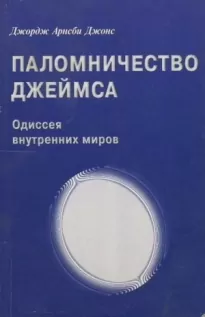Слепая физиология. Удивительная книга про зрение и слух

- Автор: Сьюзен Барри
- Жанр: Биология / Научная литература / Самиздат, сетевая литература
Читать книгу "Слепая физиология. Удивительная книга про зрение и слух"
211
S. Pinker, The Language Instinct: How the Mind Creates Language (New York: William Morrow and Company, Inc., 1994).
212
A. Aciman, “Are You Listening?” New Yorker, March 17, 2014.
213
D. Wright, Deafness: An Autobiography (New York: Harper Perennial, 1993).
214
E. Glennie, Good Vibrations (London: Hutchinson, 1990).
215
D. Bendor and X. Wang, “Cortical Representations of Pitch in Monkeys and Humans,” Current Opinion in Neurobiology 16 (2006): 391–399; R. J. Zatorre, “Finding the Missing Fundamental,” Nature 436 (2005): 1093–1094.
216
W. R. Drennan et al., “Clinical Evaluation of Music Perception, Appraisal and Experience in Cochlear Implant Users,” International Journal of Audiology 54 (2015): 114–123; J. Schnupp, I. Nelken, and A. J. King, Auditory Neuroscience: Making Sense of Sound (Cambridge, MA: MIT Press, 2012); C. M. Sucher and H. J. McDermott, “Pitch Ranking of Complex Tones by Normally Hearing Subjects and Cochlear Implant Users,” Hearing Research 230 (2007): 80–87.
217
K. Gfeller et al., “A Preliminary Report of Music-Based Training for Adult Cochlear Implant Users: Rationales and Development,” Cochlear Implants International 16, no. S3 (2015): S22–S31.
218
B. Biderman, Wired for Sound: A Journey into Hearing, rev. ed. (Toronto: Journey into Hearing Press, 2016); M. Chorost, “My Bionic Quest for Bolero,” Wired, November 1, 2005, https://www.wired.com/2005/11/bolero; Drennan et al., “Clinical Evaluation of Music Perception”; R. Wallace, Hearing Beethoven: A Story of Musical Loss and Discovery (Chicago: University of Chicago Press, 2019).
219
A. Romoff, Hear Again: Back to Life with a Cochlear Implant (New York: League for the Hard of Hearing, 1999).
220
E. C. Cherry, “Some Experiments on the Recognition of Speech, with One and with Two Ears,” Journal of the Acoustical Society of America 25 (1953): 975–979.
221
A. W. Bronkhorst, “The Cocktail-Party Problem Revisited: Early Processing and Selection of Multi-talker Speech,” Attention, Perception & Psychophysics 77 (2015): 1465–1487.
222
J. O. O’Sullivan et al., “Hierarchical Encoding of Attended Auditory Objects in Multi-talker Speech Perception,” Neuron 104 (2019): 1–15.
223
R. Litovsky et al., “Simultaneous Bilateral Cochlear Implantation in Adults: A Multicenter Clinical Study,” Ear and Hearing 27 (2006): 714–731; R. J. M. Van Hoesel and R. S. Tyler, “Speech Perception, Localization, and Lateralization with Bilateral Cochlear Implants,” Journal of the Acoustical Society of America 113 (2003): 1617–1630.
224
A. Romoff, Listening Closely: A Journey to Bilateral Hearing (Watertown, MA: Imagine Publishing, 2011).
225
J. Schnupp, I. Nelken, and A. J. King, Auditory Neuroscience: Making Sense of Sound (Cambridge, MA: MIT Press, 2012).
226
J. M. Hull, Touching the Rock: An Experience of Blindness (New York: Pantheon Books, 1990), 29–31.
227
Romoff, Listening Closely, 128.
228
S. R. Barry, Fixing My Gaze: A Scientist’s Journey into Seeing in Three Dimensions (New York: Basic Books, 2009).
229
B. Crassini and J. Broerse, “Auditory-Visual Integration in Neonates: A Signal Detection Analysis,” Journal of Experimental Child Psychology 29 (1980): 144–155; M. Wertheimer, “Psychomotor Coordination of Auditory and Visual Space at Birth,” Science 134 (1961): 1962.
230
L. M. Romanski et al., “Dual Streams of Auditory Afferents Target Multiple Domains in the Primate Prefrontal Cortex,” Nature Neuroscience 2 (1999): 131–136.
231
J. Boswell, The Life of Samuel Johnson (New York: Penguin Random House, 2008)
232
S. R. Barry, Fixing My Gaze: A Scientist’s Journey into Seeing in Three Dimensions (New York: Basic Books, 2009).
233
Barry, Fixing My Gaze; O. Sacks, “Stereo Sue: Why Two Eyes Are Better than One,” New Yorker, June 19, 2006; O. Sacks, “Stereo Sue,” in The Mind’s Eye (New York: Alfred A. Knopf, 2010).
234
W. James, The Principles of Psychology (New York: Henry Holt, 1890).
235
E. J. Gibson and A. D. Pick, An Ecological Approach to Perceptual Learning and Development (New York: Oxford University Press, 2000).
236
E. Goldberg, Creativity: The Human Brain in the Age of Innovation (New York: Oxford University Press, 2018).
237
Goldberg, Creativity.
238
См. также: P. F. MacNeilage, L. J. Rogers, and G. Vallortigara, “Origins of the Left and Right Brain,” Scientific American 301 (2009): 60–67.
239
S. – J. Blakemore, Inventing Ourselves: The Secret Life of the Teenage Brain (New York: Public Affairs, 2018).
240
R. L. Gregory and J. G. Wallace, Recovery from Early Blindness: A Case Study, Monograph No. 2 (Cambridge, UK: Experimental Psychology Society, 1963), 33.
241
Blakemore, Inventing Ourselves.
242
S. E. Asch, “Effects of Group Pressure upon the Modification and Distortion of Judgments,” in Groups, Leadership and Men: Research in Human Relations, ed. H. Guetzkow (Oxford, UK: Carnegie Press, 1951).
243
Blakemore, Inventing Ourselves; L. H. Somerville, “Searching for Signatures of Brain Maturity: What Are We Searching For?” Neuron 92 (2016): 1164–1167; A. W. Toga, P. M. Thompson, and E. R. Sowell, “Mapping Brain Maturation,” Trends in Neuroscience 29 (2006): 148–159.
244
Toga, Thompson, and Sowell, “Mapping Brain Maturation.”
245
E. M. Finney, I. Fine, and K. R. Dobkins, “Visual Stimuli Activate Auditory Cortex in the Deaf,” Nature Neuroscience 4 (2001): 1171–1173.
246
M. Saenz et al., “Visual Motion Area MT+/V5 Responds to Auditory Motion in Human Sight-Recovery Subjects,” Journal of Neuroscience 28 (2008): 5141–5148; H. Burton et al., “Adaptive Changes in Early and Late Blind: A fMRI Study of Braille Reading,” Journal of Neurophysiology 87 (2002): 589–607; A. Pascual-Leone and R. Hamilton, “The Metamodal Organization of the Brain,” Progress in Brain Research 134 (2001): 427–445; L. B. Merabet et al., “Rapid and Reversible Recruitment of Early Visual Cortex for Touch,” PLOS One 3 (2008): e3046.
247
Pascual-Leone and Hamilton, “The Metamodal Organization of the Brain”; Merabet et al., “Rapid and Reversible Recruitment of Early Visual Cortex for Touch.”
248
Saenz et al., “Visual Motion Area MT+/V5 Responds to Auditory Motion.”
249
H. J. Neville et al., “Cerebral Organization for Language in Deaf and Hearing Subjects: Biological Constraints and Effects of Experience,” Proceedings of the National Academy of Sciences 95 (1998): 922–929.
250
Saenz et al., “Visual Motion Area MT+/V5 Responds to Auditory Motion.”
251
Barry, Fixing My Gaze.
252
Gregory and Wallace, Recovery from Early Blindness.
253
Chorost, Rebuilt, 171–172.
254
M. Ross, “A Retrospective Look at the Future of Aural Rehabilitation,” Journal of the Academy of Rehabilitative Audiology 30 (1997): 11–28.
255
Ross, “A Retrospective Look at the Future of Aural Rehabilitation.”
256
Barry, Fixing My Gaze.
257
Chorost, Rebuilt, 171.
258
B. Biderman, Wired for Sound: A Journey into Hearing, rev. ed. (Toronto: Journey into Hearing Press, 2016).
259
M. von Senden, Space and Sight: The Perception of Space and Shape in the Congenitally Blind Before and After Operation (Glencoe, IL: Free Press, 1960), 160.
260
Barry, Fixing My Gaze; Goldberg, Creativity; D. Bavelier et al., “Removing Brakes on Adult Brain Plasticity: From Molecular to Behavioral Interventions,” Journal of Neuroscience 30 (2010): 14964–14971; C. D. Gilbert and W. Li, “Adult Visual Cortical Plasticity,” Neuron 75 (2012): 250–264; E. Goldberg, The Wisdom Paradox: How Your Mind Can Grow Stronger as Your Brain Grows Older (New York: Gotham Books, 2005); A. Pascual-Leone et al., “The Plastic Human Brain Cortex,” Annual Review of Neuroscience 28 (2005): 377–401; E. R. Kandel, In Search of Memory: The Emergence of a New Science of Mind (New York: W. W. Norton and Co., 2006); M. M. Merzenich, T. M. Van Vleet, and M. Nahum, “Brain Plasticity-Based Therapeutics,” Frontiers in Human Neuroscience 8 (2014): doi, 10.3389/fnhum.2014.00385; Q. Gu, “Neuromodulatory Transmitter Systems in the Cortex and Their Role in Cortical Plasticity,” Neuroscience 111 (2002): 815–835.
261
S. Anderson and N. Kraus, “Auditory Training: Evidence for Neural Plasticity in Older Adults,” Perspectives on Hearing and Hearing Disorders: Research and Research Diagnostics 17 (2013): 37–57; D. M. Levi, D. C. Knill, and D. Bavelier, “Stereopsis and Amblyopia: A Mini-Review,” Vision Research 28 (2015): 377–401.
262
A. Romoff, Listening Closely: A Journey to Bilateral Hearing (Watertown, MA: Imagine Publishing, 2011), 164.
263
Barry, Fixing My Gaze; Goldberg, Creativity; Bavelier et al., “Removing Brakes on Adult Brain Plasticity”; Gilbert and Li, “Adult Visual Cortical Plasticity”; Goldberg, The Wisdom Paradox; Pascual-Leone et al., “The Plastic Human Brain Cortex”; Kandel, In Search of Memory; Merzenich, Van Vleet, and Nahum, “Brain Plasticity-Based Therapeutics”; Gu, “Neuromodulatory Transmitter Systems in the Cortex”; Romoff, Listening Closely; P. R. Roelfsema, A. van Ooyen, and T. Watanabe, “Perceptual Learning Rules Based on Reinforcers and Attention,” Trends in Cognitive Sciences 14 (2010): 64–71; S. Bao et al., “Progressive Degradation and Subsequent Refinement of Acoustic Representations in the Adult Auditory Cortex,” Journal of Neuroscience 26 (2003): 10765–10775; A. S. Keuroghlian and E. I. Knudsen, “Adaptive Auditory Plasticity in Developing and Adult Animals,” Progress in Neurobiology 82 (2007): 109–121.
264
Gregory and Wallace, Recovery from Early Blindness.
265
Biderman, Wired for Sound, 26–27.
266
Barry, Fixing My Gaze.
267
Boswell, The Life of Samuel Johnson.
268
Gibson and Pick, An Ecological Approach to Perceptual Learning and Development.
269
Bao et al., “Progressive Degradation and Subsequent Refinement of Acoustic Representations”; Keuroghlian and Knudsen, “Adaptive Auditory Plasticity in Developing and Adult Animals.”
270
Chorost, Rebuilt, 126.
271
Romoff, Listening Closely; A. Romoff, Hear Again: Back to Life with a Cochlear Implant (New York: League for the Hard of Hearing, 1999).
272
Romoff, Hear Again, 159; Chorost, Rebuilt, 88.
273
Barry, Fixing My Gaze; Goldberg, Creativity; Bavelier et al., “Removing Brakes on Adult Brain Plasticity”; Gilbert and Li, “Adult Visual Cortical Plasticity”; Goldberg, The Wisdom Paradox; Pascual-Leone et al., “The Plastic Human Brain Cortex”; Kandel, In Search of Memory; Merzenich, Van Vleet, and Nahum, “Brain Plasticity-Based Therapeutics”; Gu, “Neuromodulatory Transmitter Systems in the Cortex”; Roelfsema, van Ooyen, and Watanabe, “Perceptual Learning Rules Based on Reinforcers and Attention”; E. R. Kandel, “Increased Attention to Spatial Context Increases Both Place Field Stability and Spatial Memory,” Neuron 42 (2004): 283–295.
274
R. Latta, “Notes on a Case of Successful Operation for Congenital Cataract in an Adult,” British Journal of Psychology 1 (1904): 135–150.
275
R. V. Hine, Second Sight (Berkeley: University of California Press, 1993), 82.
276
Bavelier et al., “Removing Brakes on Adult Brain Plasticity”; Gilbert and Li, “Adult Visual Cortical Plasticity”; Goldberg, The Wisdom Paradox; Pascual-Leone et al., “The Plastic Human Brain Cortex”; Kandel, In Search of Memory.
277
R. Kurson, Crashing Through: A True Story of Risk, Adventure, and the Man Who Dared to See (New York: Random House, 2007).
278
E. Huber et al., “A Lack of Experience-Dependent Plasticity After More Than a Decade of Recovered Sight,” Psychological Science 26 (2015): 393–401.
279
Betty Edwards, Drawing on the Right Side of the Brain: The Definitive, 4th Edition (New York: Tarcher Perigree, 2012).
280
R. Feynman, “Surely You’re Joking, Mr. Feynman!” (New York: W. W. Norton and Company, Inc., 1985).
281
E. J. Gibson and A. D. Pick, An Ecological Approach to Perceptual Learning and Development, 201.





